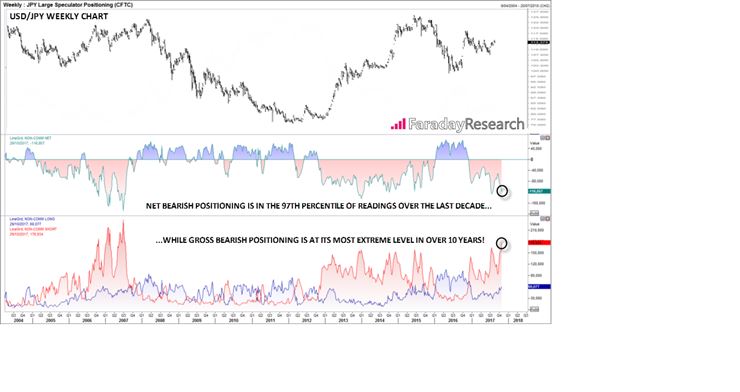The pendulum of market sentiment swings ever back and forth between fear and greed.
Taking the US dollar as an example, greed was ascendant at the turn of the year, with investors optimistic about the policies of businessman President Donald Trump and the idea that the Federal Reserve would be the only major central bank raising interest rates aggressively. As the realities of governing and economic hiccups deflated dollar bulls' wildest hopes, market sentiment swung back to excessive pessimism toward the US dollar. By the end of the third quarter, the fear had reached a short-term extreme, setting the stage for the dollar's recovery over the last two months.
While these sentiment extremes are extremely difficult to pinpoint in real time, there are some tools that investors can use to help increase their odds. One of the most useful tools is the CFTC's Commitment of Traders (COT) report, which provides a snapshot of how futures traders are positioning themselves in different assets. When these traders grow lopsidedly long or short a certain market, it suggests that a potential reversal may be at hand. In other words, when everyone's already long a market, there's no one left to buy and vice-versa.
Skimming the latest COT report, there's a risk that such a situation is developing in the Japanese yen. According to the most recent data (covering October 24), speculators are short nearly 177,000 yen contracts, the highest gross short reading on the yen since July 2007, over the years ago! The net short positioning (which accounts for speculators who are long) is slightly less extreme at around 117,000 contracts, but is still within striking distance of the 10-year extreme at about 144,000 contracts. Put another way, net short positioning in the yen is currently in the 97th percentile of all the readings over the last ten years.

Source: Reuters
Interestingly, this extreme bearish sentiment in the Japanese currency has developed despite a lack of a clear trend in USD/JPY; the pair has spent almost the entire year rangebound in the 108.00-115.00 zone. More broadly, the yen has been a middle-of-the-road performer among the major currencies so far this year, ticking higher against laggards like the New Zealand dollar and Swiss franc, while falling against standouts like the euro and pound sterling.
Fundamentally speaking, it's clear why traders have staked out such an extreme position. The Bank of Japan continues to aggressively buy assets of all types in an effort to stimulate the economy, and Goushi Kataoka, the newest BOJ governor, has actually been calling for more aggressive stimulus in recent months. Despite these unprecedented measures, inflation remains mired well below the central bank's 2.0% target, meaning that the easy policy is likely to remain in place until 2019 at the earliest.
That said, the night is often darkest just before the dawn. With yen bulls as downbeat as they've been in a decade, despite a relatively stable currency, the bar is low for positive economic surprises in the island nation. Even if Japan's economy doesn't show signs of perking up in the coming months, yen bears could struggle to push the currency lower given the already-lopsided positioning, especially against currencies that speculators have accumulated heavy long positions in, like the euro and Canadian dollar.
Make no mistake: the yen could certainly fall further from here, much as it did throughout after reaching its last sentiment extreme in late 2013. Sentiment and positioning analysis is far from a foolproof tool. But if the recent past is any guide to the future, the FX market's sentiment pendulum may be reaching its a pessimistic extreme on the Japanese yen.
